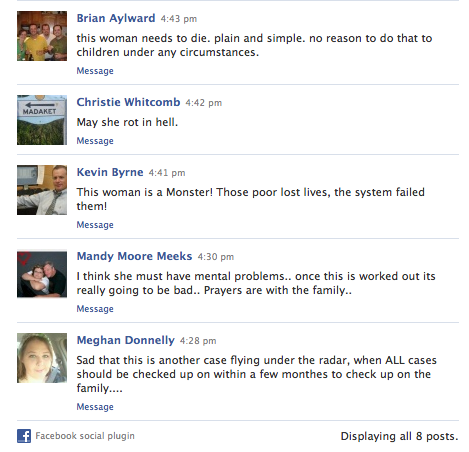I have a friend from Kansas City. Her name is Angela, and she did something kind of unusual the other day.
She started a blog.[1. On Blogger, no less! How decidedly retro! You can read Angela’s blog over at maybeyesterday.com. It’s quite good, actually.]
Angela’s always been one of those girls who seemed out of step with the Midwest. She’s a fashion nerd who grew up in Kansas City, which is like being a Jamaican bobsledder. She’d fit right in on either coast, but in KC, she’s got a style that does nothing but clash.
But it’s hers. I don’t know entirely how to describe her outfits, but I can tell you that you always know when Angela shows up in a room. Whatever her style is, she owns it.
So it made sense when, at the top of her blog, she put this quote:
Style should be effortless. If it is not effortless, then it is not yours.
And I thought: that’s it! That’s the word I’ve been looking for!
All these years, I’d been told that my style was lazy. But lazy’s such a loaded word.
Effortless.
Effortless.
Effortless.
That’s what I’ve been going for.
See, I take a fair amount of crap for my own personal style. It’s definitely a style — there are certain types of things I wear, and certain things from a certain time period that I like — but it’s the kind of style that wouldn’t necessarily show up at New York Fashion Week.
I tend to wear two types of things:
1.) T-shirts from sporting events that took place more than a decade ago.
2.) T-shirts from restaurants that serve massive quantities of food, preferably featuring images of said massive quantities on shirt.
Like, here’s one of my favorites: that’s me wearing a shirt from Krupin’s, a DC deli that my Uncle Jimmy used to work at. You couldn’t find a better pickle inside the Beltway.

Or how about this one: that’s me, in Beijing, wearing a shirt I picked up in Alicante, Spain, at my favorite doner kebab place. Sultan Kebab doesn’t sell t-shirts, but I ate there almost twice a week for an entire semester, and my friend CG and I begged the kebab guys to give us their spare shirts. They eventually did:

But nothing tops my original food shirt: it’s for Peter’s Carry Out, the counter I’ve been frequenting since I was 12. “Frequented” doesn’t really do the place justice; Ned and Bob, the guys on the griddle, were invited to my bar mitzvah. That place is the Oshinsky family’s version of “Cheers.” Best cheeseburger sub in America, as far as I’m concerned.[2. Incidentally, they don’t actually sell the giant sandwich that’s on the shirt. I’m trying to change Ned’s mind on that front.]

What I like about my style is that it’s weirdly unique. I don’t see a lot of other guys wearing such shirts a non-ironic way. But I have hope.
I was flipping through Hulu yesterday. I like to check out the late night shows and see if any bands I like have been playing. And I came across one that intrigued: indie soft-rockers One eskimO had played Leno two weeks back. I’d seen them in Denver a few months earlier and enjoyed their sound. [3. Because you’re wondering: At the show, I was wearing a shirt with a giant arrow on it. Got it while taking on a five-day hike that guaranteed me passage to heaven as long as I convert to Catholicism before I die. But that’s another story.] I clicked play.
And at the end of the set, I noticed something about the trumpet player’s shirt:
I’d eaten there.
The shirt is from a place is called Sammy’s Roumanian Steakhouse. It’s down on the Lower East Side in New York. It’s one of the only places in the world where they put schmaltz on the table as a condiment. They serve a hangar steak that flops over the edges of the plate, and an egg cream that you really can’t find anywhere outside of New York City.
How a British indie band’s bassist/trumpet player found that place? I’ve got no idea.
But I looked at that guy. I looked at that dark blue shirt, the big beige lettering from a Lower East Side kosher food institution.
Effortless, isn’t it?






 The big news out today is that
The big news out today is that 
